
The post production team on ‘South Solitary’ faced technical challenges when the weather at the shoot location turned too sunny to suit the story’s dark stormy skies. It had also been shot on 16mm film, requiring de-graining and sharpening at the DI stage.From Digital Media World Magazine
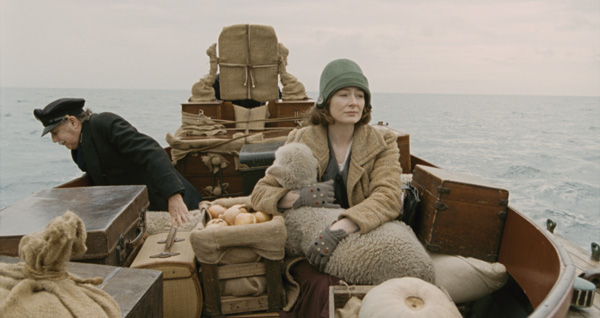 |
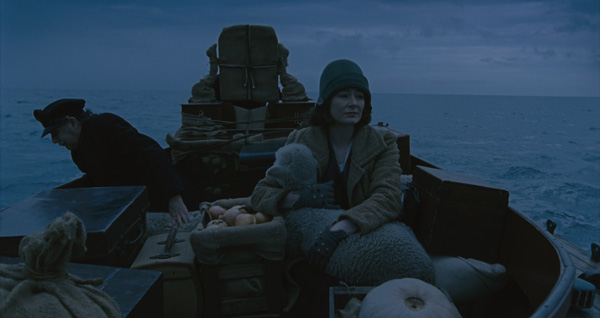 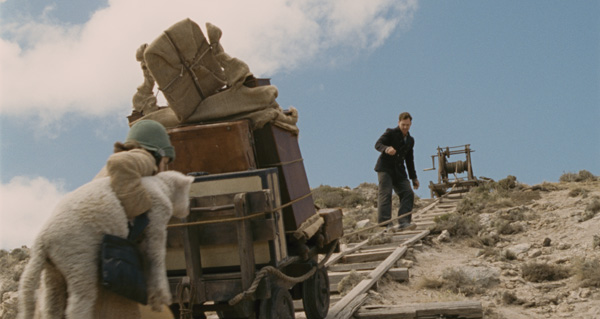 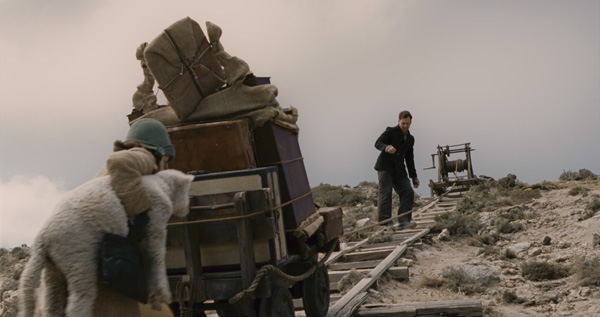 |
| Director Shirley Barrett’s 'South Solitary’ is set in the 1920s and concerns an unlikely relationship between a young woman and a shell-shocked lighthouse keeper on a remote, rugged island. It was filmed mostly on location at Cape Nelson near Portland, Victoria and the lighthouse interiors were shot at Cape Otway.
Blue Skies Director of Photography Anna Howard ACS shot the film on the ARRI SR3. She said, “We were shooting on 16mm film and I would have liked to shoot on the ARRI 416, a newer, steadier camera that might have been better for the visual effects work. We could have gone with HD but, I’m glad that the production decided to stay with film. I feel it has more latitude, which helped because we were shooting quite a few nights and in other low light conditions, and lots of white skies. 35mm is my preference, too, but is also more expensive.” Anna, Head of DI and Senior Colourist Al Hansen and the VFX Supervisor Soren Jensen recognised that the 16mm film was another likely source of problems for effects work and the looks of the film overall. While the stock itself is the same as any other film, grain structure and resolution are compromised by its small size. The final 16mm images are projected onto screens as large as those used for larger formats, even though they hold less information. Testing, Testing Anna began collaborating with Al during preproduction and with Soren while he was at Cape Nelson on survey. Because preserving and enhancing the image quality largely fell to Al, the two of them tested many different film stocks to choose stock with a fine grain structure that would make the most of the high quality lenses she was using. They tested the stock with the lenses, did some test grades and worked on the skies. She also discussed the skies with the VFX team, as this was a major focus of their work. In particular, she and Al experimented with different grain reduction techniques. “Our eventual choices for film were three Kodak stocks. I used 50 ASA mostly, for daylight exteriors, and 250ASA for the dawns and dusks, which are frequent in this film, and to help with dark interiors. Because the story was set in 1928, all artificial lighting had to be by lantern. I rated the stock slower in such situations to get a good negative, which also helps refine the grain. Then for night work, I used 500 ASA.” Location Survey “We spent two or three days walking through every scene and working out exactly where each one would play best. The scenery was right, but a large wind farm stood out on the horizon. The producers were very keen to know how much it was going to cost to remove it from the shots!” The production crew went through and over every part of the area that would be used for filming. “We eventually found a small cove for the haulage in the story, and to use as the landing site,” Soren said. “It was a good 15 minute walk for the crew to bring any equipment in to it. I only had to bring my stills camera and silver and grey balls for lighting reference but the film crew had some work to access it with all of their gear.” French Crystal Steaming Ahead “The FX team did some cleanup on these elements, composited 2D smoke into the stack and put various light sources into it that gave it different colour temperatures, for example on the bridge to the walkways into the cabins, for realism,” Soren said. The smoke came from the Alcoa Aluminium factory near the location, where Soren could shoot pure white smoke plumes against clear blue sky. I only had to pull a key to get the right look,” said Soren. A wake was added to several shots as well. “The compositing was never completely straightforward because every time we went to shoot the real ship, the weather was bright and sunny, which meant painting out all shadows. The weather in the story was always bleak and overcast. Some relighting was done in the grade but the VFX team also worked on the shadow links, working with a master plate that shows Miranda moving away from the steamship in a smaller boat. Atmospheric Particles Doing this helped the team a lot with particle animation. A scene meant to take place after a massive storm had to be shot without any actual wind, so the team had to add all the necessary atmospheric particles. Because the stock was fine-grained enough, the particles were not lost as they ran through the frame. They used Maya for the 3D particles but they also made use of library files of particles shot against black, on 35mm film, enhanced with Maya particles. In another scene, Miranda is in the lighthouse at night when a hailstorm hits, cracking a window. “We had to add a new sky and lightning effects, hail hitting and bouncing off the glass. We watched a lot of videos of hail and its behaviour as it bounces off surfaces. All the particles in this case were generated and animated with Maya, compositing with Flame or Inferno. We dedicated one of the Lab’s Flame suites exclusively to this task. The geometry for this came from his survey data. While on set, he had also shot a one foot cube. The 3D artists then built their own one-foot cube, matched it to Soren’s and locked their lens. This way they could build the objects at the bottom to the correct scale, and even when they had to ‘cheat’ the scale a little to make sure the pier and luggage were visible to the audience, they could estimate a reasonable exaggeration. The matte paintings for skies tended to be layered up, instead of a single flat painting, to be able to introduce motion into the sky. “Real skies have wind of different speeds blowing clouds at different heights and in different directions,” said Soren. Rushes Relay This formed the colour-calibrated system that the production used to transfer rushes to Al and his assistant Senior Colourist Vincent Taylor at The Lab Sydney. It gave him an accurate view of what Anna was capturing in camera. Neil received the rushes and performed the telecine, flagged any major problems and sent them to Al every one or two days. Al would check them over and discuss any issues with production. At this stage, they did minimal grading to the rushes so that Anna, working in a remote location without proper viewing facilities, would also have a chance to monitor her work as she had captured it. Base Grade “The most complicated section for us was the opening titles as Miranda arrives at the island in what should be early dawn under stormy, cloudy skies,” Al explained. “Instead, it had been shot at midday in clear, sunny conditions. The sequence required both clever VFX from Soren Jensen and complex grading. Throughout, the film needed just about every trick a colourist has to influence looks – mattes, tracking and pulling keys – but I had to use them in a completely invisible way and make each scene look as if it had been shot naturally. Fortunately, Anna had captured her images correctly and as we had planned, which made them easier for us to enhance and finesse into the colour zone and mood that the director was looking for.” One Roof |
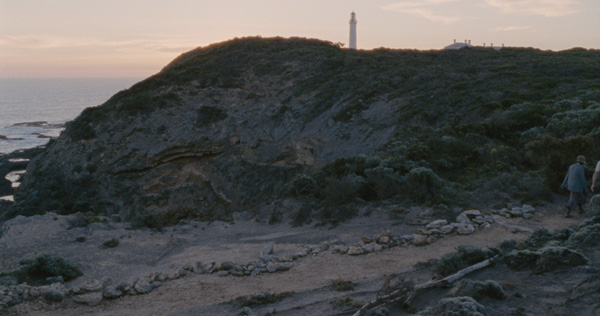 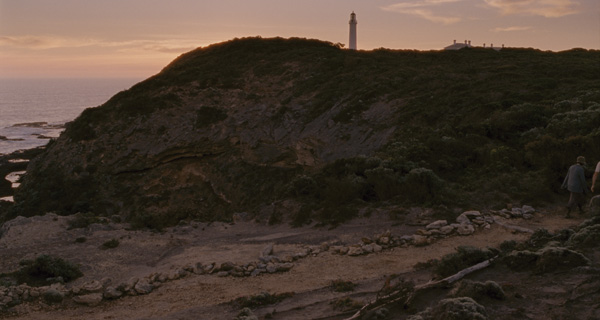 |
| De-Grain and Sharpening As well as the grade, Al also carried out grain reduction for the project, which ended up taking nearly as much time and attention. “During the pre-production process Anna and I decided to correct the sharpness in three stages. Further to testing the film stock and using high quality prime lenses to give me the best starting point she could, we then used a software technique on the Northlight 2 scanner to further enhance the resolution. “We handled the de-grain/sharpening process scene by scene,” he said. “Due to the different stocks and their response to different lighting set-ups, I found it wasn’t possible to use an overall setting across the film. After the grade was locked, we rendered the grading parameters into the 2K data, re-conformed the film into reels and began the de-grain and sharpening from the beginning, scene by scene, just like the grade, aiming to create a look similar to 35mm. It was as complex as the grading itself due to the fact that the process can create unwanted artefacts if pushed too hard, and took time and patience.” Words: Adriene Hurst Images: Courtesy of The Lab SydneY |
| Featured in Digital Media World. Subscribe to the print edition of the magazine and receive the full story with all the images delivered to you.Only$79 per year. PDF version only $29 per yearsubscribe |


















